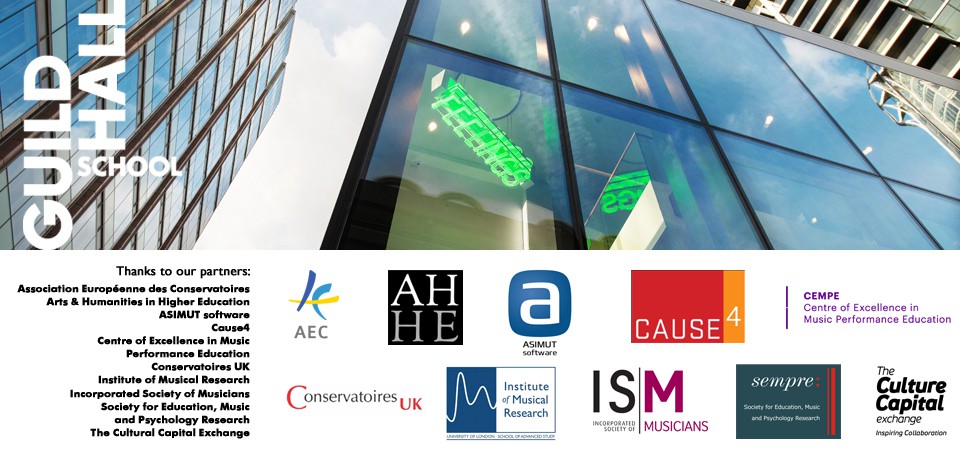Gemma Carey, Associate Professor at the Queensland Conservatorium, Brisbane, argues for conservatoires to enable and embed reflective communities of practice amongst the one-to-one teaching staff… Please add your comments in the “Leave a Reply” box below.
Exploring practice as teachers: a reflective and creative community
Recently, academic studies have strongly suggested that teachers and institutions need to rethink the characteristics of the traditional master-apprentice model. Issues of teacher dominance and power loom large. As one student expressed: “It’s almost as if I’m just two hands walking into …her teaching room, once a week for an hour and a half that then walk out again at the end of that hour and a half.”
Further concerns arise over the relevance of the this model to the needs of 21st century musicians, and whether the master-apprentice approach, traditionally deeply entrenched in the culture of music pedagogy, allows teachers to remain agile and responsive to the specific and creative needs of each and every student. As Richard Chronister so aptly observed, this model “does not inspire us to question how we teach”.
So, then, how can teachers be encouraged to embrace a more inspired and effective approach to their one-to-one teaching?
Reflective Practice
One way to do this is for teachers to reflect on their teaching. Studies have shown that teachers who reflect on their practice become better teachers (Calandra et al, 2006; Carey et al, 2013; Glazer et al, 2004; McPhail, 2013; Sellars, 2013). Reflection can assist teachers not only to view their teaching from different perspectives but if regularly employed, can deepen teachers’ understanding of their own practices. This in turn may prompt a shift in their practice and open up pathways to more creative approaches. There are several approaches to self-reflection including journalling, online discussions, video recording of one’s own practice and peer observation workshops.
Creative Communities
One aspect of reflection however, which has proven to be valuable across a range of contexts, involves sharing reflections with a colleague. When teachers share their reflections, they learn from each other and their teaching practice further develops. Through observing and being observed, insights into teachers’ own practice are deepened. Generative dialogue also has the capacity to encourage teachers to take risks and in turn gives them the confidence to be more explorative and creative. This type of community practice has the added benefit of reducing the sense of isolation one-to-one teachers often suffer. Lortie likens to this to working in egg-crates.
Engaging in reflective processes also has an indirect effect on students, the next generation of teachers, who may be encouraged to engage in a similar process – whether as students, and/or as future teachers. Moreover, reflecting with colleagues also responds to a call for greater transparency in the practices of teachers.
“What needs to be done?”
One-to-one practice can move beyond its entrenched position but it requires a collaborative, reflective and creative community – one in which teachers are encouraged to explore and improve their teaching practices through critical reflection.
Given that the majority of students who major in performance at tertiary level will teach at some stage of their career, higher music degree institutions provide an ideal opportunity for embedding reflective practice in one-to-one music performance tuition.
There are two main conditions necessary for reflection to become successfully embedded in the long term:
First, institutions need to provide a structured platform for teachers to share conversations about their teaching practices. This will also contribute to appeasing the professional isolation often experienced by one-to-one teachers.
Second, teachers need to engage in peer-to-peer dialogue within and across institutional contexts (and perhaps particularly by drawing on technology such as videographic data to do so). Essential to this platform, is however, the need to foster a supportive, collaborative and creative environment in which teachers can safely explore and share their teaching practices with colleagues.
Institutions and those who teach within them, have both an obligation and an opportunity to ensure that one-to-one practice “inspires us to question how we teach”. Unless they take the lead, enhancement of one-to-one teaching and learning processes is unlikely, and creative, relevant and safe learning environments for students cannot be guaranteed.
References
Calandra, B., Brantley-Dias, L., & Dias, M. (2006). Using digital video for professional development in urban schools: A preservice teacher’s experience with reflection. Journal of Computing in Teacher Education, 22(4), 137-145.
Carey, G., Grant, C., McWilliam, E., & Taylor, P. (2013). One-to-one pedagogy: Developing a protocol for illuminating the nature of teaching in the conservatoire. International Journal for Music Education, 31(2), 148-159. doi: 10.1177/0255761413483077
Glazer, C., Abbott, L., & Harris, J. (2004). A teacher‐developed process for collaborative professional reflection. Reflective Practice, 5(1), 33-46.
McPhail, G.J. (2013). Developing student autonomy in the one-to-one music lesson. International Journal of Music Education, 31(2), 160-172. doi: 10.1177/0255761413486407
Sellars, M. (2013) Reflective practice for teachers. Thousand Oaks, CA: Sage.
Gemma Carey is Deputy Director (Learning and Teaching) and Head of Pedagogy at the Queensland Conservatorium Griffith University in Australia. Gemma’s expertise and research interests are in the area of Performance Pedagogy, Curriculum and Teaching and Learning. Her current research, supported by an Australian Government Office of Learning and Teaching grant, is investigating the development of a collaborative Model of Inquiry for one-to-one instrumental and vocal pedagogy.
